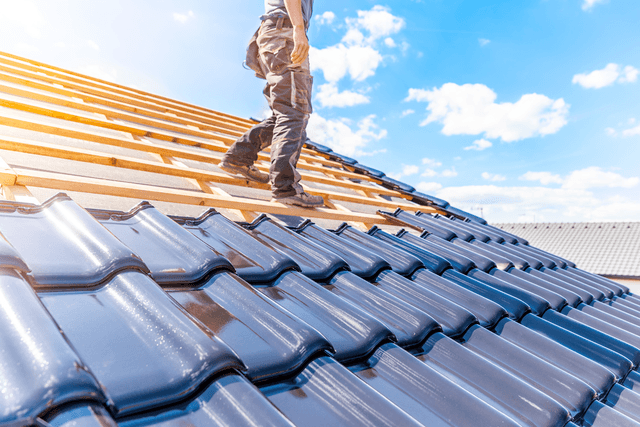Your roof plays a vital role in protecting your home from the elements. Over time, even the most well-constructed roofs will require replacement or significant repairs. If you’ve ever asked yourself, “When was my roof replaced?” you’re not alone. In this article, we’ll explore how to determine when your roof was last replaced, the typical lifespan of different roofing materials, and signs that it might be time for a roof inspection or replacement.

Understanding Roofing Lifespans
The lifespan of a roof depends on various factors, including the type of roofing material used, climate conditions, and the quality of installation. Here’s a general guideline for the lifespan of common roofing materials:
- Asphalt Shingles: Asphalt shingle roofs, one of the most common roofing materials, typically last 20 to 30 years. Architectural or dimensional shingles can last longer.
- Wood Shingles or Shakes: Wood roofing can have a lifespan of 20 to 25 years with proper maintenance. Cedar and redwood are popular choices.
- Metal Roofing: Metal roofs are known for their durability and can last 40 to 70 years or more.
- Slate Roofing: Natural slate roofs have an impressive lifespan, often lasting 50 to 100 years or more.
- Tile Roofing: Tile roofs, made from materials like clay or concrete, can last 50 to 100 years or more, depending on maintenance.
- Flat Roofing: Flat roofs have varying lifespans based on the material used, with modified bitumen roofs lasting 20 to 30 years and PVC or TPO roofs lasting 20 to 35 years.
Determining When Your Roof Was Replaced
If you’re unsure when your roof was last replaced, consider the following methods to help you determine the timeline:
- Check Records: Review any home improvement records or documents left by previous homeowners. Receipts, invoices, or records from roofing contractors can provide valuable information.
- Ask Previous Owners: If possible, contact previous owners or residents of the property and inquire about the roof’s age and any maintenance or replacement history.
- Examine the Roof: A visual inspection of the roof can reveal signs of aging, wear, or previous repairs. Look for cracked, curled, or missing shingles, as well as areas with moss or algae growth.
- Consult a Professional: Roofing professionals can inspect your roof and provide an estimate of its remaining lifespan based on its current condition.
Signs It’s Time for a Roof Inspection or Replacement
Even if you don’t know the exact age of your roof, certain signs indicate that it may be time for a roof inspection or replacement:
- Leaking: Persistent roof leaks, especially after heavy rainfall, are a clear sign that your roof may be compromised.
- Sagging or Bowing: A sagging or uneven roofline can indicate structural issues that require immediate attention.
- Excessive Granule Loss: If you find granules from asphalt shingles in your gutters or around your property, it’s a sign of shingle deterioration.
- Visible Damage: Cracked, blistered, or missing shingles are signs of roof wear and tear.
- High Energy Bills: An inefficient roof can lead to increased energy costs due to poor insulation or ventilation.
- Mold or Mildew Growth: Persistent mold or mildew growth on the roof’s surface or in the attic suggests moisture problems.
Conclusion: Maintaining Your Roof’s Integrity
Knowing when your roof was last replaced is essential for ensuring the safety and integrity of your home. Regular inspections and maintenance can extend the lifespan of your roof, but eventually, all roofs will require replacement. If you’re unsure about your roof, consult professionals to assess and decide on repairs or replacement. Investing in its upkeep ensures long-term home protection and peace of mind.



Leave a Reply